 Did anyone guess this week's theme based on last week's post? I asked a question as a hint. Get it? Get it? Ok, that's enough for my corny sense of humor. On to the actual post. Anyone who has ever lived with a 2-year-old (or talked to one for more than 3 minutes) knows that they like to inundate you with questions. I remember when my niece was two (way before I had kids) and had me going on a 30 minute conversation about the run I had just taken because she wanted to know why. Why was I going for a run? Why did I go that way for my run? Why do you run? Why do you wear sneakers when you run? It was so stinkin' cute. I mean it was also a little overwhelming and frustrating because, hey, I had just gone for a run and really needed to change and take a shower. I also could not for the life of me understand why she had to ask me so many questions. Remember - this was pre-children. Now that I have two kids who are (barely) older than 2, I get it now. I really get it. Even though the questioning becomes less incessant as they get older, that curiosity never really leaves kids. As they grow and develop, they need to make sense of the world around them and asking questions is one of the best ways to do that. Yes, it can get a little overwhelming, but try to see it from their perspective. Let's say you go to visit another country where you don't speak or read the language, don't understand the transportation, and most of the people are twice your size. If you had a guide to lead you around the country, wouldn't you ask about 1,000 questions every hour. What is on this menu? Is it safe to go down this street? Where is the bathroom? What's the #1 place I have to visit? No seriously, where is the bathroom?!?! But you would also want the guide to ask you questions. To guide you so that you would eventually be able to make sense of everything on your own. You wouldn't want them to tell you every answer all of the time, but to help you figure it out for yourself. To become self-reliant. Because isn't that what we want for our kids (I mean really, yes! Moving out prior to age 30 is preferable)? Keep in mind that the guide doesn't know the answer to every question all of the time, but they can and should help you find the answer. Because if you asked the question, you need to know. So how do you, oh wise guideperson, help your little one through questions? Here are a few suggestions:
What questions will you ask your little ones? What questions have you been asked about diversity lately? What will you ask your kids first? Leave a comment below. Don't forget to check back next week as we continue on to letter R! We're winding down towards the end of the alphabet. I hope that you've been enjoying the series. What has been your favorite letter so far? Which ones have you tried? Haven't seen the other posts? Check them out here on the blog and then sign up for the newsletter so you don't miss another one! You'll get weekly tips & tricks to help you make sense of raising a child with this essential 21st century skill.
1 Comment
 I LOVE a good party. Who doesn't? Since having kids, I feel that I'm being pulled in about 1,000 different directions and making time to spend with friends that I love is so much harder than it used to be. That's why I love having a party to get so many of the people I love and care about in one room. Oh, and because there's extra eyes on my kids I don't have to watch them every single second (true confessions here people!). And having a lot of different people in the room presents a great opportunity for learning from each other while still having fun. Here are a few ways to infuse some diversity into your rocking good time. Manga! I was so excited when we got to F post in this series. I knew from the very beginning that food would be the focus. I love to eat - it's one of my favorite pastimes. But in addition to eating itself, I also love to share food with others. I love to hear about what others grew up with, what the food culture was in their house, and what foods they enjoyed when they were young. Do this at a party and encourage everyone to bring a treasured food from their culture. You'll end up with quite an assortment, which will be so cool. I'll bet you'll even learn something about one of your friends (Bobby's grandmother was Polish and taught him how to make ridiculously delicious pierogis? Who knew?). Take this opportunity to share food with friends, family, and of course, your kids. Invite EVERYONE: When I was younger, I used to be very careful and selective of the different friends that I would invite to parties or events. I wanted to make sure that everyone would get along and I sometimes worried that some people would clash with others or one group of friends wouldn't have anything in common with another group. I like to chalk that up to the insecurities of youth - now long gone (the youth part, not the insecurities). As I grew older, I began to realize a few things - that I wanted to hang out with everyone, all at once because having more people around is just more fun! It's also a great way to learn new things. Different groups of friends tend to bring different ideas, perspectives, and worldviews to the table. What a cool and fun way to increase diversity awareness! Oh, and one more thing, your friends all have at least one thing in common - you! So no matter how different people may seem, there are always commonalities. What a fantastic lesson for you and your kids. Encourage Friends of Friends: This is one of my favorite ways to meet new people. You know cool people right? And they know cool people. So why don't we all get together and meet more cool people? Let your friends know that inviting others that they know is not just ok, it's highly encouraged. They may just bring someone that you've never met before from a particular culture. Or maybe they are from an area that you are not familiar with. It gives you an opportunity to learn something new and model inclusiveness for your kids. Then when you hit it off, your circle expands, as does your cultural and diversity knowledge and awareness. Oh, and you made a new friend in the process! I hope you enjoyed this post and it made you think about how to throw a bigger and better party this year (before barbeque season is over). I hope you'll check back next week for letter Q. Any guesses as to what it might be about (hint hint)? Sign up for the newsletter so you don't have to remember to find out. It will all be delivered to your inbox along with more tips and strategies. Sign up today! 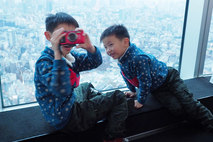 What do you see? What do you see? So much of what is discussed here at Culturally Competent Kids has to do with taking some kind of action or participating in some sort of activity. This post is about something quieter and a little more introspective: observation. Don't worry - for those of you who love to talk (I may or may not be one of those people), there is a part of this that involves talking, but much of this is about seeing more and speaking less. There are a number of components in this post. Even though it seems simple, don't skip the first one. It may be the most uncomfortable one, but it's also the most important. Do Your Own Observations: This is of yourself and others. Take some time to observe your surroundings. Who do you see? What interactions do you observe? Who do you gravitate towards? Who gravitates towards you? What about your family, friends, and kids? What do you see in their interactions and behaviors? Encourage Your Kids To Observe: Point out some of the things that you observe and then - here's the hard part - don't say anything for awhile! Let your kids see what you see, hear what you hear. They also need to discover new things, to come up with their own observations without constant commentary from adults. They may ask questions, which you can and should answer, but don't generate all the questions yourself. Let them ask their own. Have the Discussion: Ok, now it's time to talk. What did your child observe? Was it different from what you saw? Are there patterns in your life around diversity? What questions does your child have for you? What questions do you have for your child? Did anything surprise you or make you uncomfortable? Brainstorm Ways to Make Changes: Ok, so now what? Once you have observed and discussed, what should you do with your newfound information? Do you want to change anything about your town, your school, your community, yourself? Talk to your child about changes you can both make. Changes you can make together or alone. Big or small, doesn't matter. Teach your child that changing themselves can change others and therefore change the world. A seriously powerful message. Will you try this with your kids? What did you observe in yourself and others? What did your kids observe? Leave a comment below. Check back next week for letter P. Sign up for the newsletter so you'll never miss a post. You'll get weekly tips and tricks delivered right to your inbox. Share with your friends, family, & community! 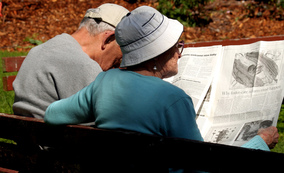 Kids Can Do This Too! Kids Can Do This Too! Oh, the good old-fashioned newspaper. Where has it gone? I remember as a kid growing up in suburban New York when we started getting the New York Times delivered. The monstrosity that was the Sunday Times was always a big deal in my house (seriously, that thing probably weighed 10 pounds - I often carried it from the bottom of the driveway to the house - Sunday workout done). We would dissect it and claim our favorite sections - mine was definitely Style. Then we would sit at the breakfast table reading and chatting, often migrating to the living room when we had gotten enough food and caffeine. I still like to do the same thing when visiting my parents' house. I really have to thank my parents for being avid newspaper readers because it made me want to be. I really think that there is something special and different about sitting on the couch with that big paper and a cup of coffee (or tea in my case). It's just not the same as sitting in front of your computer, phone, or TV. In my opinion, print news is not dead. So, what about the diversity thing? And what does this have to do with our kiddos? Well the thing that's so great about print newspapers is that there is a plethora of ways to use it for all kids. Below are some ideas: For the Artistic Kid: Who here didn't use newspapers on at least a monthly basis for an art project when you were younger? I know I did. You can do the same with your kids just change around the art project. Incorporate diversity in there by having them find words or pictures that have to do with a particular topic. Talk about how easy or difficult it is to find people of different races in the newspaper. There are lots of options. Use your imagination! For the Analytical Kid: This is for the kids who can already read - probably best for teens and tweens. Have them read some of the articles in the paper and talk about the content and language in the articles related to diversity. Are most of the articles you are reading about a diversity of people? Do you notice that people of color are designated as such whereas people who are Caucasian are not (this happens frequently in articles)? Over time, do you notice that certain people are discussed often in the paper while others are left out? Design this around your child's interests. For the Budding Writer: Have your kid read an article and then write an alternative version that focuses on diversity or changes the language. You could also have your child write an opinion piece and submit it to the paper. How will you use newspapers with your kids? Do you have other ideas that aren't listed above? Leave a comment below and share your ideas! And check back next week for letter O. If you tend to forget (like I do), sign up for the newsletter so you don't miss a post! You'll get tips and tricks delivered weekly right to your inbox. And don't forget to enter the Back To School Giveaway! It ends tonight at 9pm so don't wait! Get your entry in today! 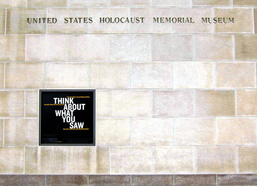 One of the most moving museums ever. A must! One of the most moving museums ever. A must! If you remember waaaayyyyyy back in the post for letter A we talked about art. And in that post, I listed a few museums around the U.S.A. and world that housed amazing art collections. While I still encourage you to check those out, the museums that I'm going to talk about here are slightly different. Not all museums are about art - at least not paintings and sculpture. Many museums focus on culture and they are a great way to learn something new with your kids. A lot of them have absolutely fantastic children's programming as well so be sure to check out their websites and see what they have available. Then, if you're in the area, check out one of these fantastic museums in person. If they are too far, check out their websites or visit one of your local cultural museums for a fun dose of diversity!
Which museum interests you the most? Which will you check out first? Leave a comment below. And don't forget to check back next week for the next letter N. We are officially in the second half of the alphabet! You can still sign up for the newsletter and get all of the remaining letters and posts delivered right to your inbox so you don't have to remember to check. Enjoy and share with others! 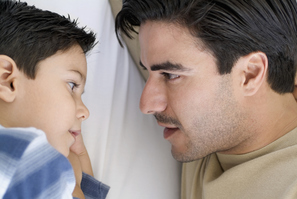 Ahhh L. The letter of Life, Love and yes, LANGUAGE. So what do we mean when we say language? The languages that people speak in different countries? The differences in the way that people talk? All of the above? Yes! Let's talk about different languages first. I think that it is so great when people speak another language. Here in DC, there are dual-language programs popping up in several elementary schools and I think it's fantastic. In fact, my kids are in a dual-language program at their school and it has been so good for them. So what are the benefits of learning another language? I'm glad you asked...
But the way we communicate is just as important as the distinct language that we speak. There are so many regional differences between languages that sometimes it can be hard to understand someone who speaks the same language, but is from a totally different area. For example, though they both speak English, people with Boston accents sound quite different from people with southern drawls. And there are differences within a region too. Some people think that there is just one New York accent, but the way people speak in Brooklyn is different from how they talk in Staten Island, which is different from the accent of someone from Yonkers. And let's face it, anyone who spends time with teenagers knows that they have their own language unique to their age group. There are all kinds of phrases that teenagers say that others have no clue what they are talking about (what the heck is "on fleek" anyway?) So, language is complicated. But we can stretch ourselves and always learn more. Will you learn how to speak another language (French, Mandarin, Teenager)? Will you learn more about regional differences and slang? What will you encourage with your children? Leave a comment below. Check back next week for letter M! Better yet, sign up for the newsletter and get the latest from Culturally Competent Kids delivered right to your email! Enjoy tips, tricks, and strategies. And don't forget to go to the homepage and sign up for our Back to School Giveaway! Everything your child needs for school plus an Amazon giftcard & great diverse books. Enter today!  Fill 'er up! Fill 'er up! Well, the topic for K is a little disappointing for me. The word 'knowledge' doesn't make the right sound at the beginning of the word! It just doesn't sound the way I want it to: K for a word that starts with an 'N' sound. Darn you English language! Ok, now that the incredibly nerdy side of me has gotten that out of my system, we can talk about knowledge. Because correct beginning sound or not, it's an important part of cultural competence. In fact, most definitions of cultural competence include something about having knowledge of different cultures (awareness, skills, behaviors, attitudes are also often thrown in there). So possessing knowledge about other cultures is absolutely vital. It's important to keep in mind that having knowledge about every culture is pretty much impossible. You are never going to know everything about everyone around the world. But it's always something that you strive for. In several previous posts (I'm loving B, C, & G) I talked about how to increase cultural knowledge while having fun with your kids. There will be even more suggestions in upcoming posts (letters M & P are favorites of mine). So in this one, I thought I'd focus on the grown-ups for a change and offer some adult book suggestions for how to increase your cultural competence knowledge. If you have teens or young adults at home then they may also be able to read these with you:
Which one will you get first? Have you read any of these? What did you think? Do you have additional suggestions for adult books? Leave a comment below. Don't forget to check back next week for letter L! Better yet sign up for our newsletter and it'll be delivered right to your inbox! 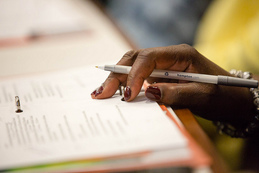 Get it all out. Write it all down. Get it all out. Write it all down. This post is for all of you out there that have an introspective kid at home. That kid who is often really quiet and then asks the most amazingly insightful questions - ones that you can't possibly begin to answer. Questions like: "How do you know there is no such thing as monsters if you've never seen them?" or "Do people and animals all go to the same place when they die even if they don't get along?" or the ever-popular "Where do we come from?" Seriously? How did all of that brilliance just come out of my child's mouth?!? Some kids are just incredibly reflective and express themselves best when they write down their thoughts. If you have a kid that is creative, you can encourage them to make sense of the diversity in their world by journaling about it. It can be something that they share with you or something private that is only for them. Whatever your child prefers, you should respect. But be sure to let them know that you're there to talk if they ever want to. Below are some journaling suggestions (you don't have to write anymore! There are lots of alternative options) and some ways for your child to get started. You can suggest these to your kid, but don't force it (especially if you have a teenager at home - that's a surefire way to make sure it'll never happen). Let them know that this is a creative option that they might want to try and let their imagination flow from there. Who knows, they may come up with something that is much cooler than you or I could ever imagine! Ways to Journal:
Journal Topics:
Leave a comment and let us know what you might suggest to your child and what he or she may journal about. Did you kid share with you or do it privately? Let us know! Did you enjoy this post? Check back next week for letter K! Better yet, sign up for the newsletter so you don't have to remember to check. Get valuable tips & tricks and all the latest from Culturally Competent Kids! 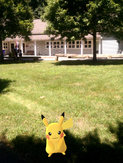 I found you Pikachu! I found you Pikachu! It's official. Pokémon Go is the newest nationwide obsession. People are glued to their phones, trying to capture as many Pokémon as humanly possible. Diversity issues have captured the nation's attention as well, but for very different - and tragic - reasons. The shooting at the Orlando nightclub, the deaths of Black men at the hands of police officers, and the sniper attack of 5 Dallas police officers have left Americans reeling. These recent events are overwhelming for many and perhaps that is part of the reason Pokémon Go is so popular. At a time when so much of the news is bad news, it's nice to have some kind of escape. But you can do both - enjoy Pokémon Go and learn about diversity. In fact, both are great activities to do alone or with others - especially kids. Read on and discover what they have in common (it's more than you think!).
But there is one caveat; one way in which Pokémon Go is very different from diversity: Pokémon Go isn't real. The discrimination and oppression that minorities deal with on a daily basis is very, very real. Yes, Black men get shot and killed. Yes, women get sexually assaulted while they are unconscious. Yes, LGBTQ young people are subject to bullying at an astonishingly high rate. That is not augmented reality. It's not virtual reality. Those are simply the facts. Don't shy away from learning about diversity. It can be surprisingly fun and I highly encourage that you do it with your kids. And unlike video games, which come and go, diversity is here to stay. So embrace it all - the initial learning, the updates, the technical errors. In the end, the payoff is always worth it. Did you enjoy this post? Sign up for our newsletter! Instead of having to remember to check out the blog, you will get great information delivered right to your email. Tips, strategies, articles, and videos so you know that you're not alone! When you sign up, you will receive a useful diverse book list for kids of all ages-babies to young adults. Enjoy! 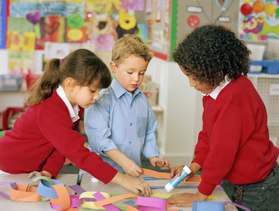 I really like this particular letter because it's all about getting up close and personal. It's great to talk about people who are different than you, but one thing that is truly effective in changing hearts, minds, and attitudes is interacting with people who are different. Why is this the case? Well, when you interact with and get to know people who are different than you, they can help to debunk the myths that can be held about a group that they belong to. Think all Muslims are terrorists? Not my friend from school and her family. All Black people are violent? Not the nice man from my church who always gives me candy (this is actually something that happens at my church - one man gives my kids candy every weekend. They LOVE him - clearly!). All gay people are promiscuous? Not our family friend who has been in a committed and monogamous relationship with his boyfriend for the past 8 years. Without these interactions, it can be harder (not impossible, but much more difficult) to understand that stereotypes aren't applicable to everyone. This can be especially helpful for children, who need something concrete, rather than hypothetical, to really internalize that. Or better yet, interactions can help prevent stereotypes from developing and solidifying in children's brains to begin with. There is a caveat to this, however. The interaction has to be authentic. It can't be forced or just for show. Kids will see right through that. And they are going to look to you as the adult to set the tone. So if you always say hello to the mom at school who is a different color than you, but are actually friends with moms who are of your same race, that sends a powerful message to a child. Kids are smart - they know the difference! Encourage your child to interact with people who are different, but follow your own advice as well. Here are some ideas to get you started:
Which one will you try first? Which is the easiest? Any additional suggestions on ways to reach out? Leave a comment below so we can all benefit from your great ideas! Did you enjoy this blog post? Don't miss another one by signing up for the newsletter! You will get the latest from Culturally Competent Kids so you don't have to remember to check. Enjoy! |
AuthorDr. Sweeney is a licensed school psychologist and cultural competence expert. Here are her musings on life in a multicultural world. Archives
February 2017
CategoriesInterested in writing a guest blog post? Contact me for more information!
|
Proudly powered by Weebly
 RSS Feed
RSS Feed